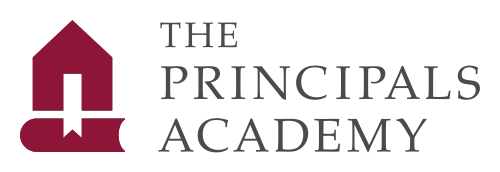Six Critical Skills the World Looks for in a very Effective Principal
How many senior managers do municipalities or government departments appoint in a year? Many hundreds, I’m sure. What percentage of these will prove to be above average performers? About 50%, I suppose. And how many will become super effective leaders?
South Africa appoints about 1000 principals a year. We all know just how tough the job is, especially post-covid and in 2025. Globally, there is a huge demand for great principals – those top performers (let’s realistically say a third) who take schools to new heights. The truth is, (and I learned this from Dr Babar Dharani at the GSB recently), too many leaders are stuck in the authoritarian and positional power of principalship, rather than the distributed, transformational, situational and servant aspects of the role.
Some countries identify promising deputies, remove them from school, and then prepare them for top leadership. Even then they don’t all succeed and, as a principal, you know why. You have to put the candidate in the hot seat and, only then, will you see how he or she brings people together, creates a positive climate, digs deep into technical issues, handles pressure, leads from the front and takes a school forward.
So, what makes that third succeed on a global stage? Just like the high-end skills any new CEO needs to succeed, principals in that top third have five or six scarce skills which set them apart. So, what are those critical skills? The problem is they’re not as simple as they sound. Here are six to delve into, reflect on and work at improving:
The first is an in-depth understanding of the routines, processes and practices which need to happen in classrooms, staffrooms and schools, to take all learners, despite their challenging circumstances, to functional literacy and numeracy. That means principals understanding the mechanics of reading in Gr 1 and the gaps in numeracy by Gr 3 and who can identify and put remediation in place to allow all learners, with great teachers, to reach their potential. All the way to Gr 12. Very few of us have this deep committed understanding of the art and the craft and the science (these days the neuroscience) of truly effective instructional leadership.
The second is the ability to take a whole team of teachers to achieve the high standard outlined above. The great principal, in a South African reality, takes the staff from where they are to where they need to be, especially in terms of subject specific capacitation and accountability.
The third is the ability to influence individual teachers on a one-on-one basis to take responsibility for their own professional development, to work within their teams, to collaborate with like minds at other schools, in districts and at marking centres, so as to develop and grow into great teachers and teacher-leaders.
The fourth is to turn the natural energy, enthusiasm and hope which so many principals have into action plans which are less often implemented, term after term. Taking the long list of improvement plans and targets and actually implementing, measuring and recording them is the scarcest of skills.
The fifth is the ability, as a principal, to develop grade and subject heads, phase and department heads, and deputy principals within one school, to be readily transferable and promotable at any school. Dispersing and developing leadership within a school’s systems to such a professionally broad extent is the hallmark of a great principal.
And the last identified critical skill is that leadership which successfully promotes a staff mindset of resourcefulness which, despite the usual constraints, succeeds in creatively and committedly engaging learners interactively with home-made instructional aids, clever group activities, online tools and extensive use of available materials.
No principals achieve the scarce skills above on their own. They actively engage mentors, colleagues on the staff, carefully chosen experts at other schools, curriculum advisers, the CTLI and PBOs and a plethora of online sources. Upgrading teaching skills is the modern teacher’s permanent mantra.
In the last few weeks, we have been visiting schools and interviewing newly appointed principals for inclusion into our programme in the next year or two. I’m taken back to my first year as a principal and to an appreciation of making a difference in a community which is seriously underserved.
Most new principals are in their fifties. We have to assess whether it makes business sense o invest thousands of rands in a person just four or five years from retirement. To me, positivity and committed intent trump most other criteria. A great principal influences hundreds of lives in a year. That’s pretty invaluable.
I’ve seldom been more impressed by a novice principal than meeting a 36-year-old school leader on my first visit to Heideveld. What impressed me was not what she was going to do but what she and her team had achieved in her first three terms. Not just small wins, but a range of successes within and beyond classrooms. Originally from Heideveld and a past learner of the school, she has made it clear to a supportive community that the school, under her leadership, is on an upward trajectory.
If you acknowledge that principalship is one of the most critical leadership roles in our country – and you know why – and you never stop trying to be at your best, you are enough.
Till next time.
Paul
Coach/Mentor
The Principals Academy Trust
No: 15/24
09 October 2024

